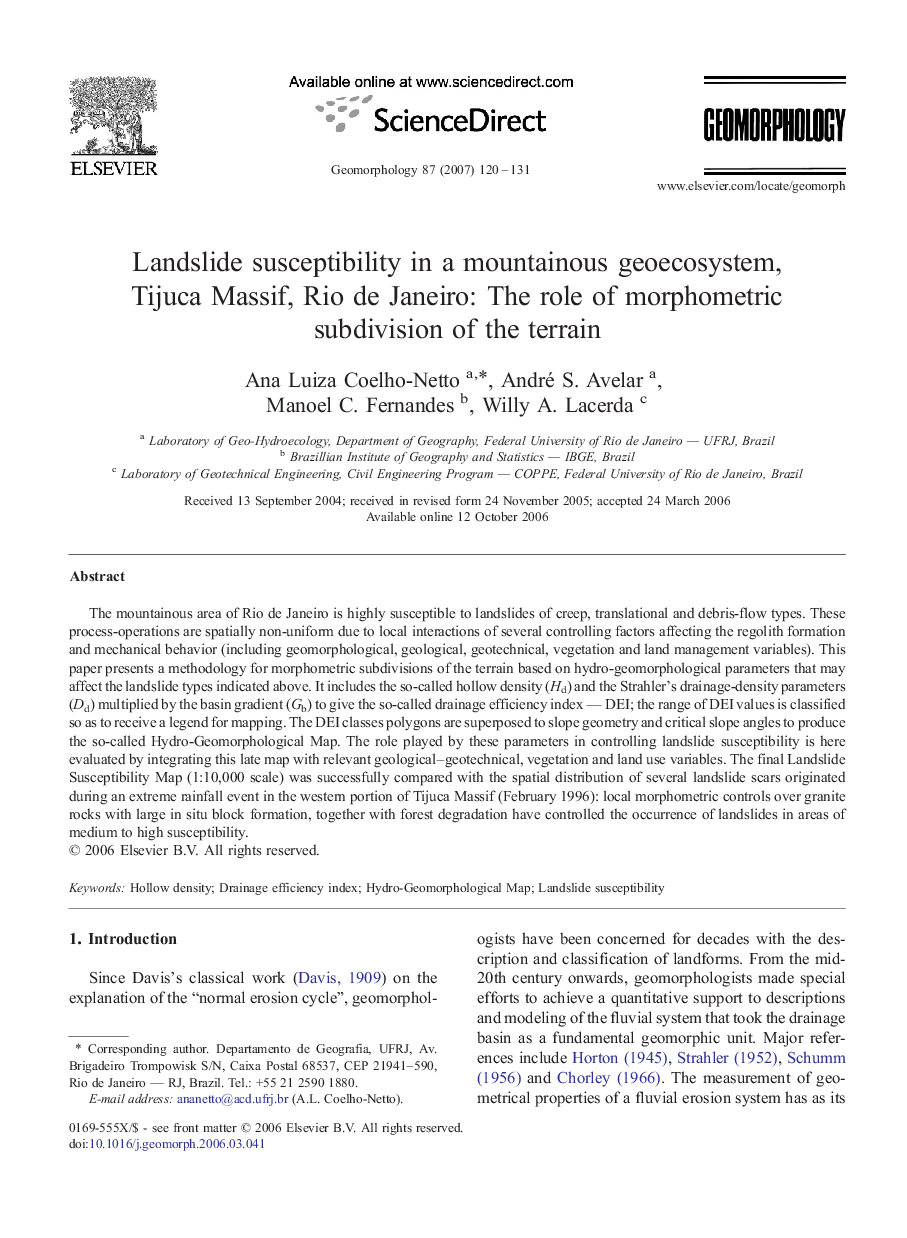| Article ID | Journal | Published Year | Pages | File Type |
|---|---|---|---|---|
| 4687278 | Geomorphology | 2007 | 12 Pages |
The mountainous area of Rio de Janeiro is highly susceptible to landslides of creep, translational and debris-flow types. These process-operations are spatially non-uniform due to local interactions of several controlling factors affecting the regolith formation and mechanical behavior (including geomorphological, geological, geotechnical, vegetation and land management variables). This paper presents a methodology for morphometric subdivisions of the terrain based on hydro-geomorphological parameters that may affect the landslide types indicated above. It includes the so-called hollow density (Hd) and the Strahler's drainage-density parameters (Dd) multiplied by the basin gradient (Gb) to give the so-called drainage efficiency index — DEI; the range of DEI values is classified so as to receive a legend for mapping. The DEI classes polygons are superposed to slope geometry and critical slope angles to produce the so-called Hydro-Geomorphological Map. The role played by these parameters in controlling landslide susceptibility is here evaluated by integrating this late map with relevant geological–geotechnical, vegetation and land use variables. The final Landslide Susceptibility Map (1:10,000 scale) was successfully compared with the spatial distribution of several landslide scars originated during an extreme rainfall event in the western portion of Tijuca Massif (February 1996): local morphometric controls over granite rocks with large in situ block formation, together with forest degradation have controlled the occurrence of landslides in areas of medium to high susceptibility.
